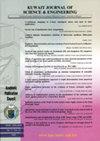Antioxidant, antimicrobial and anti-cancer properties of silver nanoparticles biosynthesized using artichoke waste extract
引用次数: 2
Abstract
In the present work, a green method is proposed for biosynthesis of silver nanoparticles (AgNPs) using artichoke processing waste extract as reducing agent. The formation of AgNPs was spectrophotometrically detected by the appearance of maximum peak at 430 nm. Transmission electron microscopic results confirmed the formation of AgNPs with different shapes with average particle size (88.94 nm). Phytochemical and gas chromatography/ mass results indicated the presence of important compounds especially phenols and flavonoids in the artichoke waste extract. AgNPs biosynthesized using artichoke waste extract were tested to determine their potential antioxidant, antibacterial and anticancer activities. The results showed that AgNPs have high antioxidant capacity (179.93 mgGAE/ml) and potent free radical scavenging activity (45.94 %). The results also showed that AgNPs have significantly high antibacterial activity against Bacillus cereus, Staphylococcus aureus, Salmonella and Escherichia coli with inhibition zone dimeter 17, 21, 17 and 17 mm, respectively. AgNPs showed anticancer activity against breast cancer cell line with a decline in cells viability with increase of AgNPs concentration and IC50 (144.29μmole/ml). Based on these results and the benefits of phytochemicals detected in artichoke waste extract, this waste could be effectively used for silver nanoparticles preparation.洋蓟废提取物生物合成纳米银的抗氧化、抗菌和抗癌性能
本文提出了一种以洋蓟加工废液为还原剂的绿色生物合成纳米银的方法。用分光光度法检测AgNPs的形成,在430 nm处出现最大峰。透射电镜结果证实形成了不同形状的AgNPs,平均粒径为88.94 nm。植物化学和气相色谱/质谱分析结果表明,洋蓟废提取物中存在重要的化合物,特别是酚类化合物和黄酮类化合物。以洋蓟废提取物为原料合成AgNPs,研究其潜在的抗氧化、抗菌和抗癌活性。结果表明,AgNPs具有较高的抗氧化能力(179.93 mgGAE/ml)和较强的自由基清除能力(45.94%)。结果还表明,AgNPs对蜡样芽孢杆菌、金黄色葡萄球菌、沙门氏菌和大肠杆菌具有显著的抑菌活性,抑菌带直径分别为17、21、17和17 mm。AgNPs对乳腺癌细胞株具有抗肿瘤活性,随着AgNPs浓度和IC50 (144.29μmol /ml)的增加,细胞活力下降。基于这些结果和在洋蓟废提取物中检测到的植物化学物质的益处,洋蓟废提取物可以有效地用于制备纳米银。
本文章由计算机程序翻译,如有差异,请以英文原文为准。
求助全文
约1分钟内获得全文
求助全文
来源期刊

Kuwait Journal of Science & Engineering
MULTIDISCIPLINARY SCIENCES-
自引率
0.00%
发文量
0
审稿时长
3 months
 求助内容:
求助内容: 应助结果提醒方式:
应助结果提醒方式:


